From the November 2023 issue of Apollo. Preview and subscribe here.
The twin brush arts of calligraphy and painting first developed in China during the long Period of Disunion, after the fall of the Han empire in 220. Improvements in the manufacture of brushes and silk and, from around 1000, the development of paper as a support encouraged the emergence of highly skilled calligraphers and painters, increasingly recognised as ‘artists’ and even accorded the status of scholar. Their work was supported by critics, imperial patrons and private collectors. Didactic figure painting, genre scenes, portraiture, landscapes and gardens, flower and bird paintings, were all admired at different periods, whether on hanging scrolls, hand scrolls, fans or in albums; for some, calligraphy was the most highly regarded. The hierarchies shifted: landscape was ranked only sixth out of 10 genres in the imperial Xuanhe Catalogue of Paintings, compiled around 1120, but from the late Yuan dynasty (1279–1368) onwards it became an especially admired genre, and was core subject matter for the expressive ‘literati’ painters of the Ming era (1368–1644). Ink was the unifying factor, linking poetry and painting, philosophy and art.
Although the Tang Emperor Wuzong (r. 841–46), in persecuting Buddhism, destroyed much of the physical evidence of Buddhist painting, it is clear from early written records that painting was by 700 a revered and well established tradition in China. Artists learned by meticulously copying renowned masterpieces of earlier eras, with evolutions in mood, style, technique and subject matter all predicated on veneration of canonical forerunners. After the Ming dynasty, individuality was more highly valued, with the major Chinese cities fostering distinctive artistic schools, while prints and engravings spread European techniques – Renaissance perspective, baroque chiaroscuro – but the great masters of the Song and Yuan periods still inspired many. In the 19th and 20th centuries, Chinese artists increasingly experimented with techniques and subject matter, but reverence for tradition remained a defining quality.
The turmoil of the 20th century saw Chinese painting branch into twin streams of traditional ink-and-brush painting and avant-garde art. Today, although the highest prices for traditional brush-and-ink work are paid for paintings from the modern era, the pieces that are most prized explicitly invoke the classical tradition. It is indicative of the deep commitment of Chinese collectors to traditional imagery and techniques that the record for a Chinese traditional painting is the HK$370m paid in April 2022 for Landscape after Wang Ximeng, an ink and colour on silk hanging scroll by Zhang Daqian (1899–1983). Wang Ximeng (1096–1119) was a prodigy of the Northern Song period whose only surviving work, the long blue-and-green masterpiece A Thousand Li of Rivers and Mountains, now in the Palace Museum in Beijing, itself drew on a long tradition of azurite and malachite painting reaching back to the Sui dynasty (581–618).
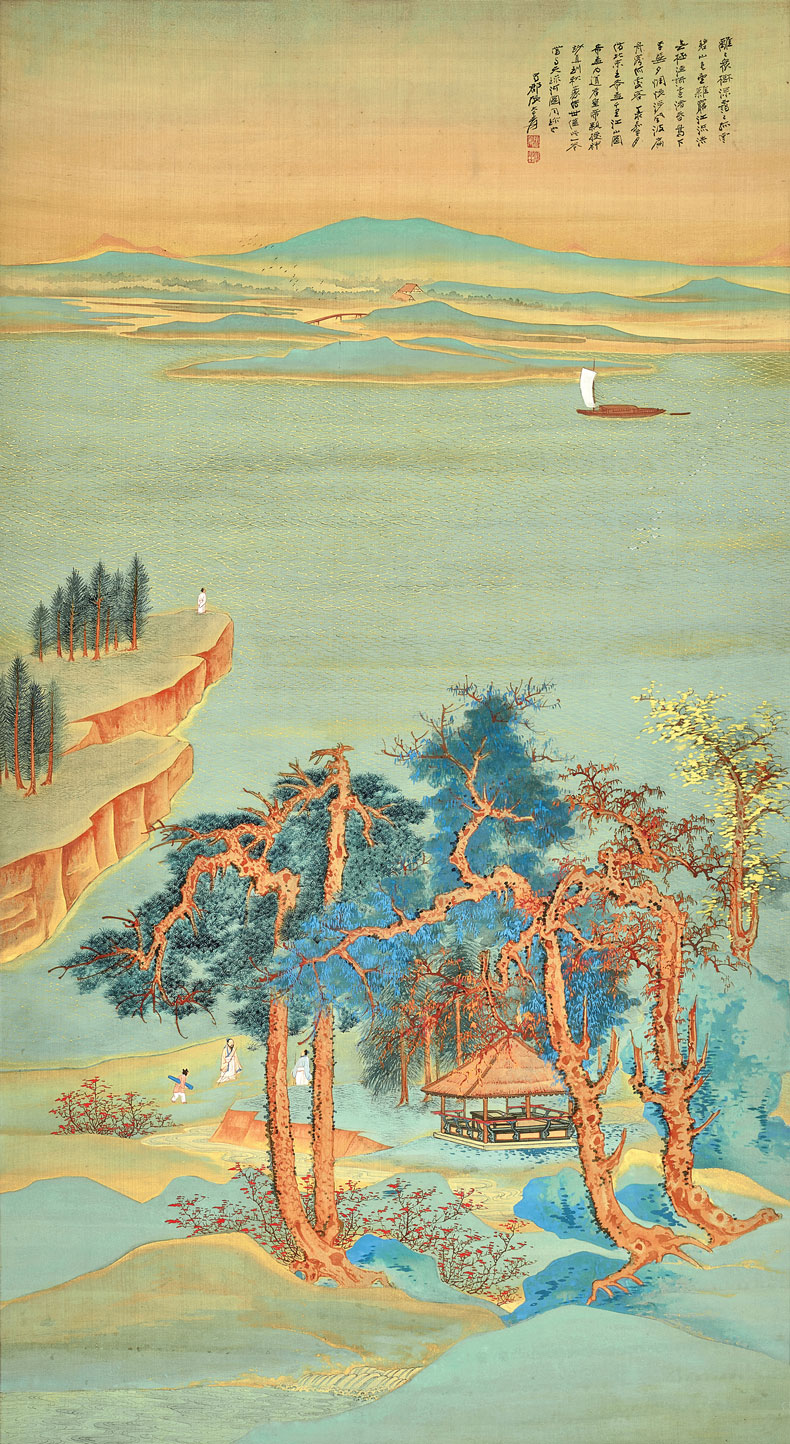
Landscape after Wang Ximeng (1947), Zhang Daqian (1899–1983). Sotheby’s Hong Kong, HK$370m
Carmen Ip, head of Fine Chinese Paintings, Sotheby’s Asia, calls Zhang ‘the Picasso of Asia’. Landscape after Wang Ximeng was accomplished in 1947, just before the artist left China to travel the world. After 1948, a combination of deteriorating eyesight and foreign influence led him to incorporate abstract and Expressionist elements into his paintings; however, after he settled in Taiwan in 1978 he reverted to more traditional Chinese imagery. Other recent high prices at auction have been for his popular ‘splash’ works: the vibrant hanging scroll Peach Blossom Spring (1982), more than two metres high, achieved HK$270.7m in 2016 at Sotheby’s Hong Kong, where his atmospheric Mist at Dawn (1968) sold in 2021 for HK$214.6m – 100 times what it fetched there in 1991. The increase reflects the entry of Chinese buyers into this market over the last 15 years. Another artist to have benefited from this phenomenon is Pu Ru (1896–1963), a Manchu prince turned painter, whose record stands at $4.8m for Friends in Mountain, sold at China Guardian Auctions, Beijing, in 2021. Outstanding examples from the classical era are also making high prices. In October 2020 the Long Museum in Shanghai paid HK$306.6m at Sotheby’s Hong Kong for Ren Renfa’s painted hand scroll Five Drunken Princes Returning on Horseback (estimate HK$80m–$120m). This Yuan dynasty work bears many collectors’ seals, including eight seals of the Qianlong Emperor.
For Chinese buyers, artists’ and collectors’ seals, poetic inscriptions and celebratory colophons added by subsequent owners contribute greatly to value. Bruce MacLaren, global head of Chinese paintings and calligraphy at Bonhams, comments: ‘Provenance is key to a great sale.’ He points to an album of 12 fans on gold leaf, Landscapes and Flowers (1665–86) by Yun Shouping (Fig. 2): this was likely assembled under the auspices of the Qing dynasty court, and bears the collectors’ seals of both the Qianlong Emperor (r. 1736–95) and his son, the Jiaqing Emperor (1796–1820). The fans sold at Bonhams New York in September for $318,000 (estimate $300,000–$500,000). The downside of the Chinese expertise in copying, MacLaren notes, is the difficulty of authenticating classical works, but where authenticity is established, ‘paintings from Suzhou’s Wu School of the 14th to 16th centuries have perpetually retained their lustre, and scrolls created by 17th-century masters during the transition between the Ming and Qing dynasties hold a special appeal.’ MacLaren has seen a recent upswing of interest in lesser-known classical names and 18th-century ink landscapes, which only two years ago attracted no attention: ‘Now there is better connoisseurship.’ He points to two recent lots sold at Bonhams that demonstrate the enthusiasm for classical calligraphy: Wang Shizen’s Calligraphy Album of Letters to Home (1665–90) and the Qianlong Emperor’s Calligraphy Couplet in Running Script. The former was estimated at $5,000–$7,000 and sold for $193,550; the latter went for HK$9.7m on a HK$4m–$8m estimate.
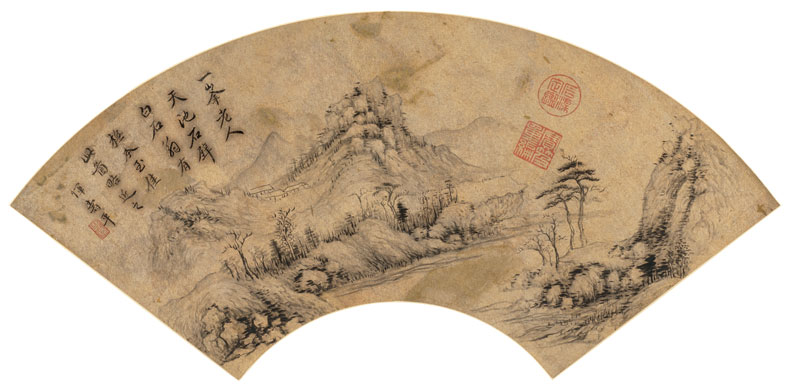
Mounted fan from the Landscapes and Flowers album (1665–86), Yun Shouping (1633–90). Bonhams, New York, $318,000
From the time of the Ming dynasty onwards, many great works found their way into Japanese collections, and from there, in the 20th century, into major European and American collections. Mark Slaats of the London-based dealers Littleton & Hennessy says that while Chinese buyers may dominate the auction market, there is still interest among European and American collectors in exceptional works. Oli and Paul Moss, of venerable London dealership Sydney L. Moss, on the other hand, regret that a combination of competition from Chinese buyers and significant issues regarding authenticity have meant that ‘We really don’t have Western collectors,’ although they still sell to US museums: ‘In the 1990s the market was in the USA, but since the 2000s, it has been in Hong Kong and China.’ They have, however, found interest in the West for the work of Gao Qipei (1660–1734) who, in pursuit of individual expression, painted with his fingers and even his fingernails.
One area neglected by the Chinese is work by fine artists not in their most famous style: the Mosses have a handscroll by Du Jin, Befriending Cranes (c. 1490), with important colophons, which they could secure because of its unusual style. Their primary fascination however is for the dissident artists of the late 17th century. One leading figure is Zhu Da (c. 1625–c. 1705) – also known by his pen name Bada Shanren – a Ming prince who became a monk, whose paintings of fierce birds are much sought after. The Mosses have Red Peak Landscape, by Liu Du after Zhang Sengyou, a hanging scroll from 1644, the year Beijing fell to the Manchus, which deliberately harks back to a pre-Tang era, as a protest against the incomers. The Mosses remark that the Chinese focus currently is on a mere 200 classical artists: ‘There are bookfuls of other artists: as the market expands, the Chinese will seek to fill in the gaps.’
From the November 2023 issue of Apollo. Preview and subscribe here.
Unlimited access from just $16 every 3 months
Subscribe to get unlimited and exclusive access to the top art stories, interviews and exhibition reviews.

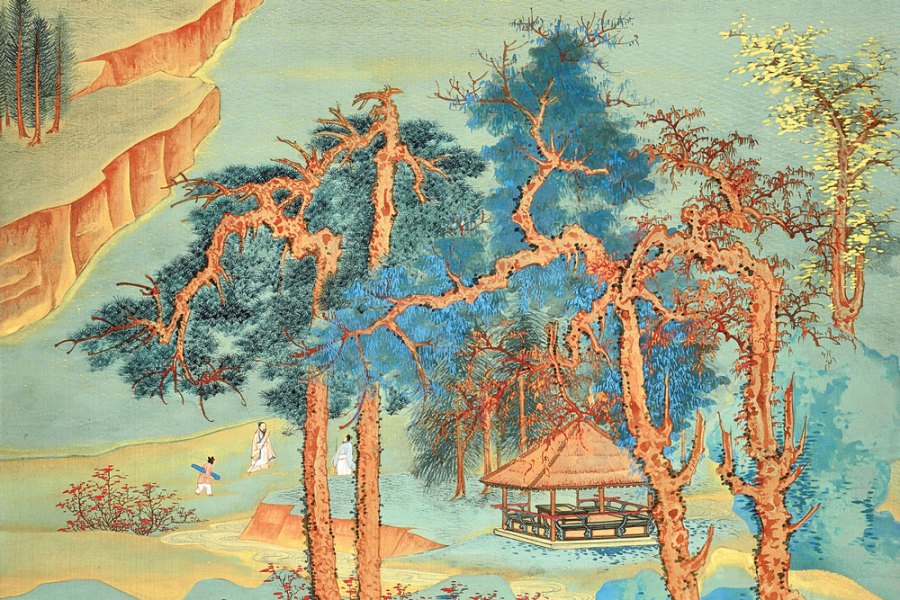
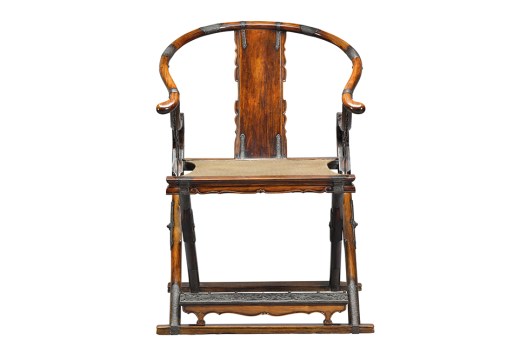
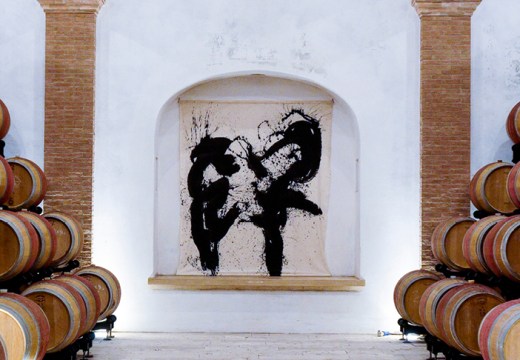
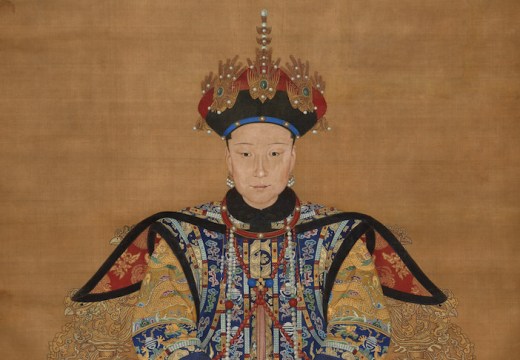









![Masterpiece [Re]discovery 2022. Photo: Ben Fisher Photography, courtesy of Masterpiece London](http://www.apollo-magazine.com/wp-content/uploads/2022/07/MPL2022_4263.jpg)
It’s time for the government of London to return to its rightful home